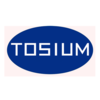熱加工對Z3CN20-09M雙相不銹鋼組織及熱老化沖擊斷裂行為的影響熱加工對Z3CN20-09M雙相不銹鋼組織及熱老化沖擊斷裂行為的影響Effects of Hot Working on the Mircostructure and Thermal Aging Bahaviors of Z3CN20-09M Duplex Stainless Steel 鑄態Z3CN20-09M雙相不銹鋼經1200℃熱鍛后,采用400℃熱老化100,1000,3000h處理. 研究發現經熱加工后鐵素體晶粒的取向呈現無序態, 奧氏體晶粒由粗大的柱狀晶經再結晶后變成細小的等軸晶. 隨熱老化時間延長,鑄態和鍛態材料的沖擊功都呈現下降趨勢. 熱老化前期, 鑄態和鍛態材料均呈現微孔聚集型斷裂, 斷口出現大量韌窩花樣. 熱老化3000h后, 鑄態和鍛態材料均呈現準解理斷裂, 鐵素體發生脆性解理斷裂, 奧氏體以撕裂或微孔聚集型斷裂. 鐵素體區域內取向不相同導致鍛態材料沖擊斷口解理特征明顯少于鑄態材料. Duplex stainless steels are a class steel which composed of austenite(A) and ferrite(F).when exposed to certain temperature(204~538),the fracture toughness of duplex stainless steel will be deteriorated with aging time. In the present work, Hot forging induced of change of ferrite grain orientation and austenite grain refinement, expecting to improve the impact toughness after long-term thermal aging. Moreover, the effects of ferrite grain orientation on the impact fracture behaviors were investigated by SEM and EBSD. Cast duplex stainless steel Z3CN20-09M was forged at 1200℃and then thermal aging for 3000h at 400℃. The crystal orientation of ferrite changed obviously after hot working and the austenite is changed from the original coarse columnar grains to the fine equiaxed grains. The impact toughness of cast materials and forged materials decrease a lot with aging time, Both charpy impact energy of forged aged material and uaged material are higher than cast material. cast material and forged material exhibit microvoid coalescence fracture in the early of thermal aging, after 3000h thermal aging, the impact fracture features changes from ductile dimples to brittle cleavages in ferrite and tearings or dimples in austenite. However, Cleavage features in forged material was significantly less than cast material for difference of ferrite crystal orientation.
|







